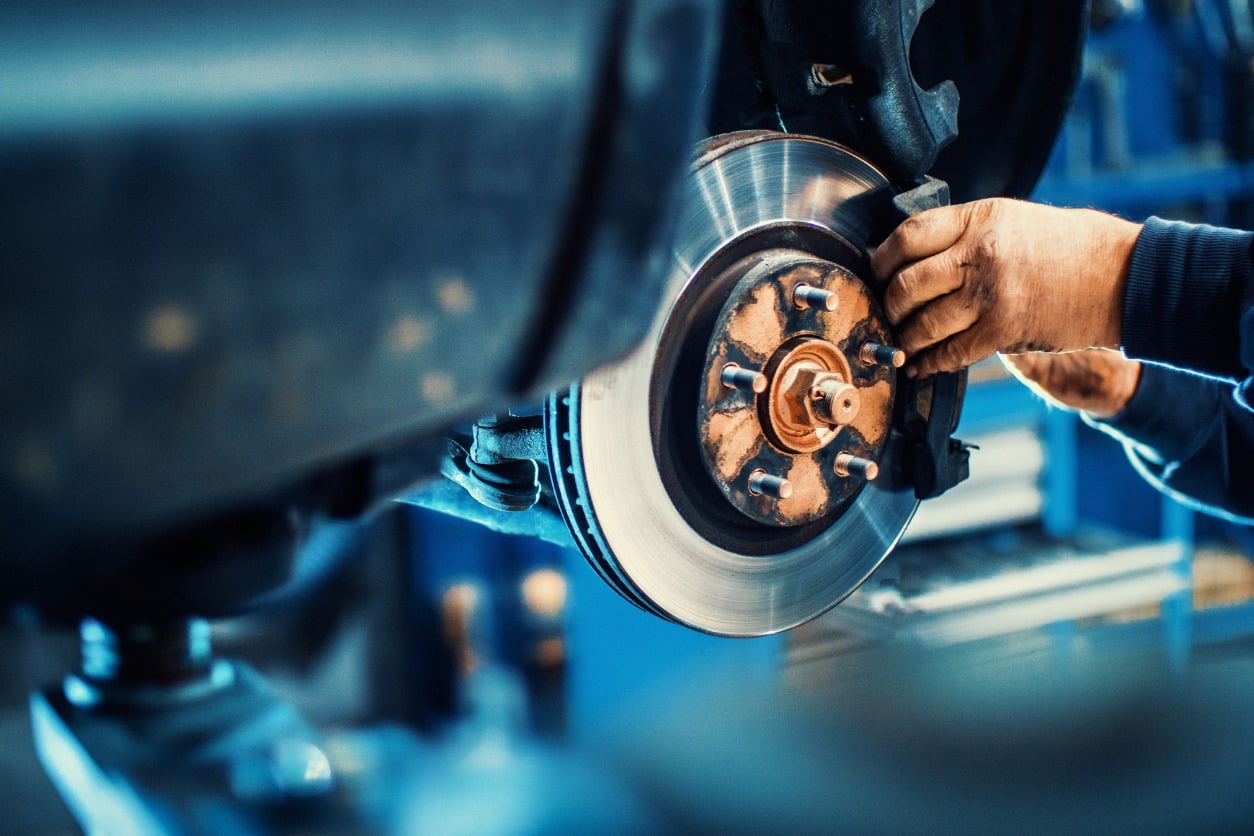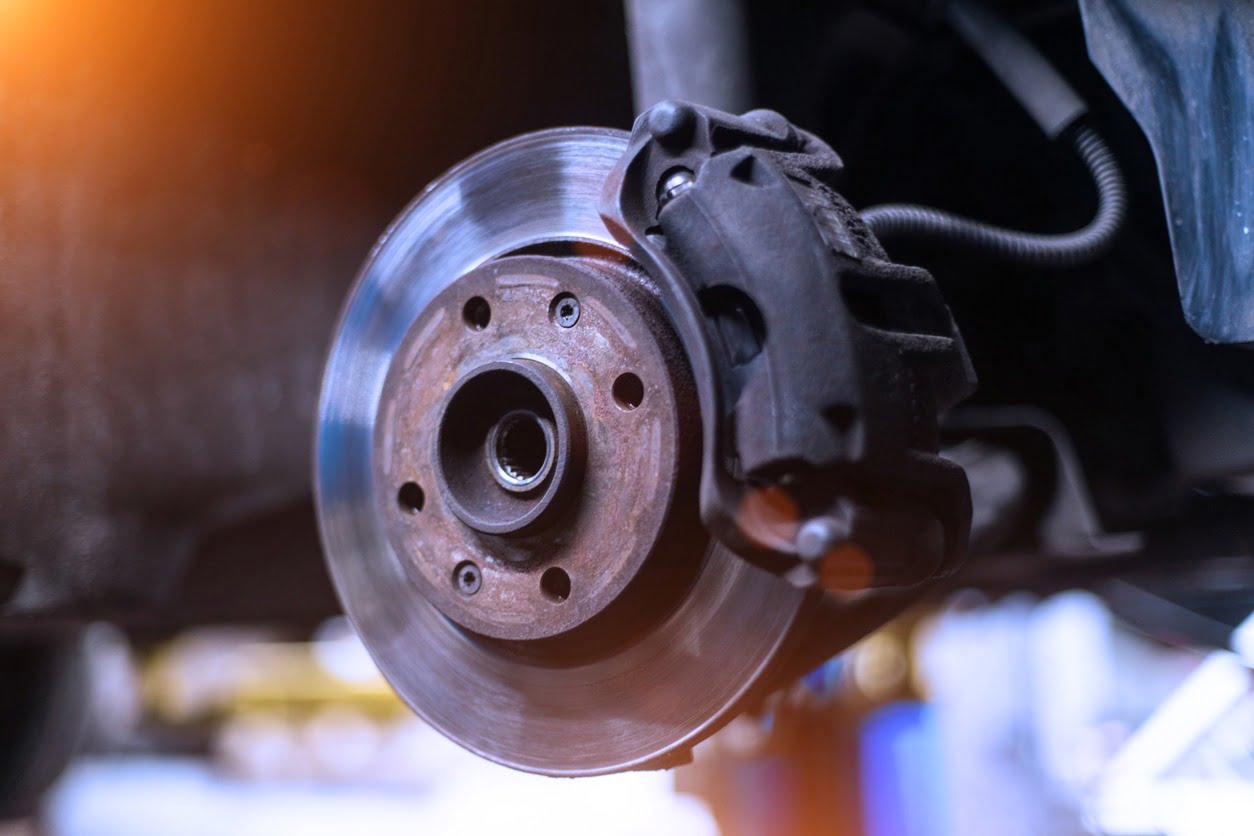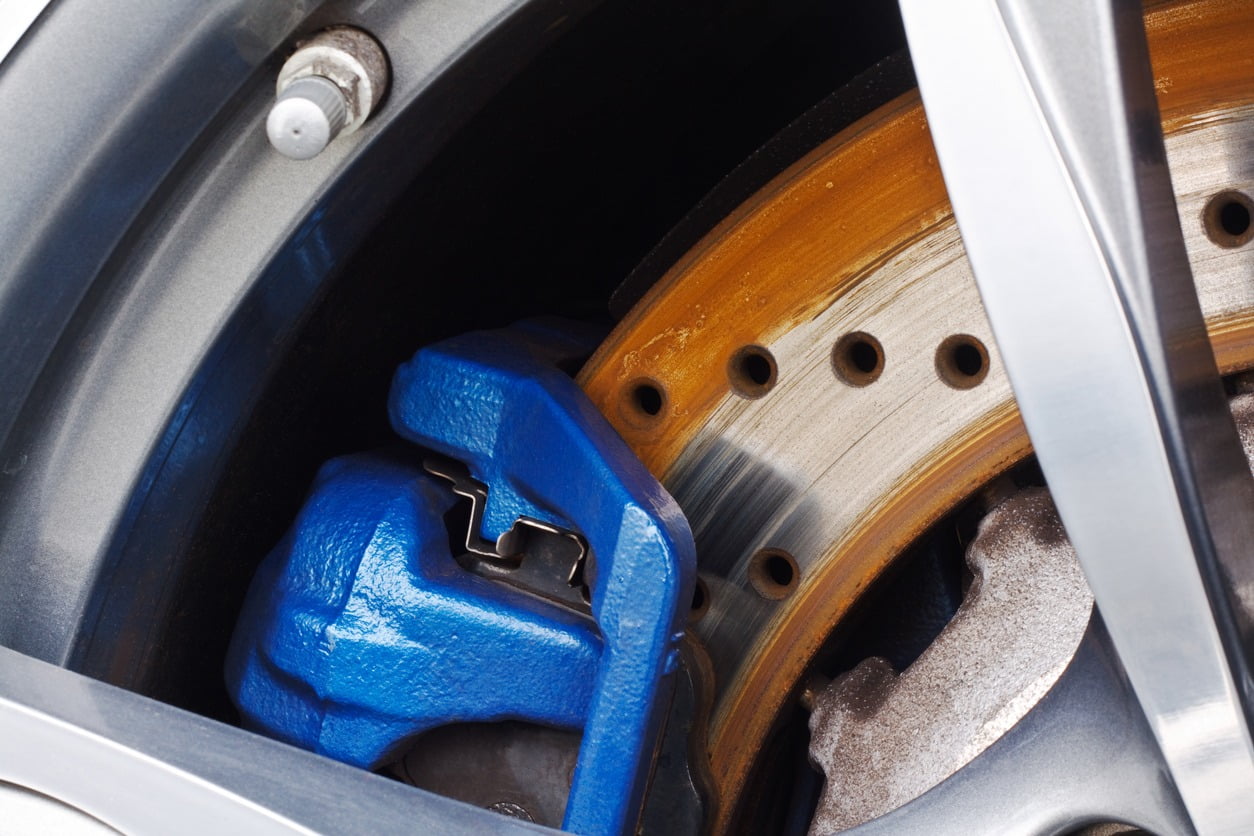
Winter driving conditions take their toll on most areas of your car, from the cooling system and exhaust pipe, to the tyres and paintwork. Even the brakes are vulnerable to low temperatures and excess moisture, so it’s important to make sure they’re properly maintained throughout the season.
To give you an idea of how winter can affect your brakes, we’ve put together a guide on some of the common brake faults which can occur in cold, wet driving conditions, as well as practical advice on how to avoid them.
Quick Links
Temperature
The Problem
When roads are hazardous, wet and slippery, you’ll be using the brakes much more than in normal driving conditions. This is especially true on icy or snowy roads, when you spend more time pressing the brake than the accelerator.
This overuse can cause the brakes to heat up, which causes the braking performance to diminish.
The Solution
It’s important to adjust your driving style to avoid exhausting the brakes in wintry driving conditions.
Don’t be tempted to ‘ride the brakes’, leaving your foot on the pedal for long periods. Instead, press the brakes gently, stay in as high a gear as possible and use engine braking to control your momentum without relying too heavily on the brake system.
‘Glued On’ Brakes
The Problem
Have you ever turned your ignition only to find that the brakes have stuck on? This is called ‘glued on’ brakes, and it’s a symptom of moisture getting between components of the brakes and causing them to seize when the car is left standing for long periods.
Say you go out to your car after a very cold night, but it won’t start properly when you find the biting point and press the accelerator. There’s a chance that the moisture between the brake pads and disc/drum has frozen, causing the wheels to seize up and not move freely. Glued on brakes can also be a sign of rust spots between the brake pads and disc.
The Solution
There’s no guaranteed way to prevent glued on brakes, as it’s very hard to remove all moisture from the wheels after a wet winter’s drive, but you could try:
- Stopping it freezing by parking in a garage or covering your car overnight.
- Keeping them clean and well-lubricated to help reduce the likelihood of the brakes sticking in wintry conditions.
Rust
The Problem
Rust is one of the biggest causes of wear and tear on cars, and can affect external components throughout the year, not just in winter. Brakes are very exposed to rust since they’re made from steel and aluminium, so you may find that your brake disc or brake drum develops a coating of rust in the winter.
Rust is more likely to develop on your car’s brakes in winter, when roads are wet and covered in salt. When you park up after a drive, water and road salt stays on your brakes, causing rust to set in rapidly. In some cases, you might find a thin layer of rust on your brakes after just a day of being parked after a wet winter’s drive.
The Solution
Unless you stop driving completely in winter, there’s no real way to completely stop rust from forming on your car’s brakes. Small amounts of rust won’t cause too much of a problem, provided you stick to a regular cleaning routine which removes excess salt from your car. However, should rust develop beyond just a few spots, this will impact on brake performance, so you should take your car to a garage if you notice significant rust spots on the brakes.
Worn Brake Lines
The Problem
Reinforced brake lines and brake fluid are tough enough to deal with extreme cold weather, but prolonged exposure to the elements can cause wear and tear of the brake lines, resulting in cracks or small holes.
When these kinds of problems develop, water and moisture can get inside the lines and freeze. This can increase your car’s stopping distance and cause issues like brake dragging.
Though rare, this type of fault can be costly to repair and will have a big impact on safety, so it’s crucial that the brake lines are inspected regularly.
The Solution
- Keep on top of the maintenance of your car’s brake system by following the manufacturer’s schedule for brake servicing and maintenance.
- Make sure the brake fluid reservoir is always fully topped up.
- Cleaning your car’s undercarriage to remove salt, dirt and moisture can also help keep the brake lines in good condition.
At Prestone, we’ve developed a range of high-performance car maintenance products and fluids that protect your car in even the toughest conditions. Tested in extreme cold and hot temperatures, they offer complete protection no matter what the weather throws your way. For more information, visit the homepage.


